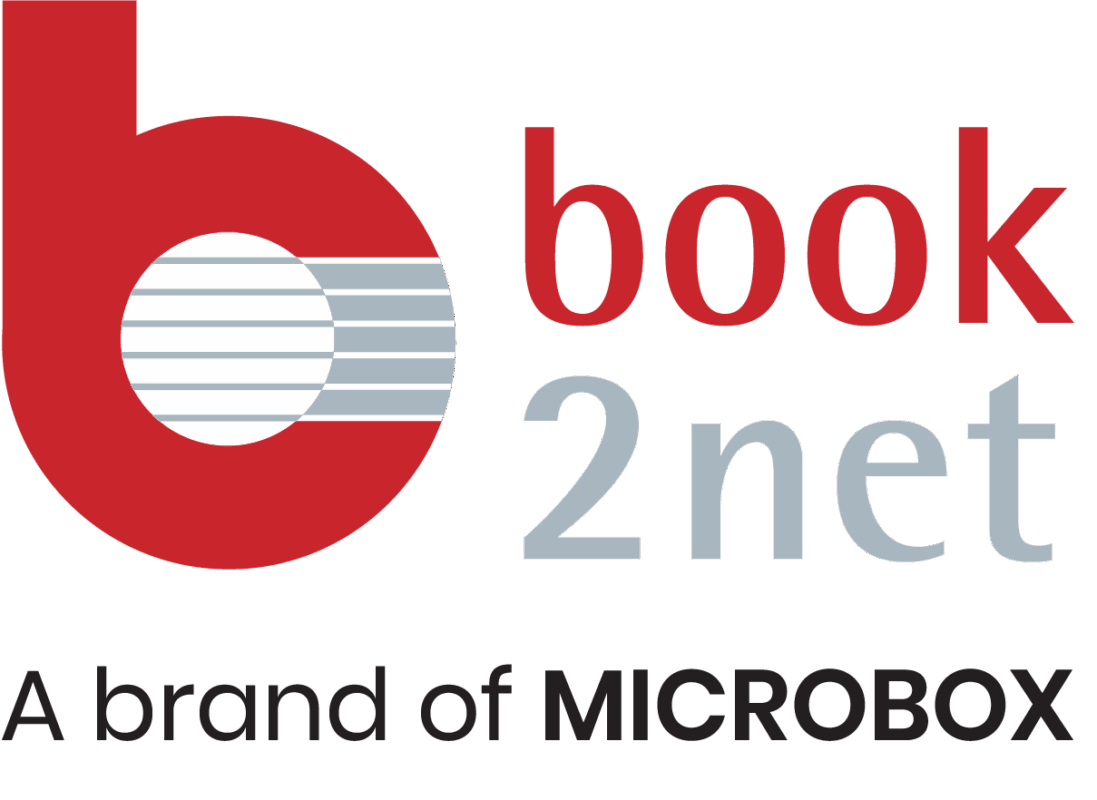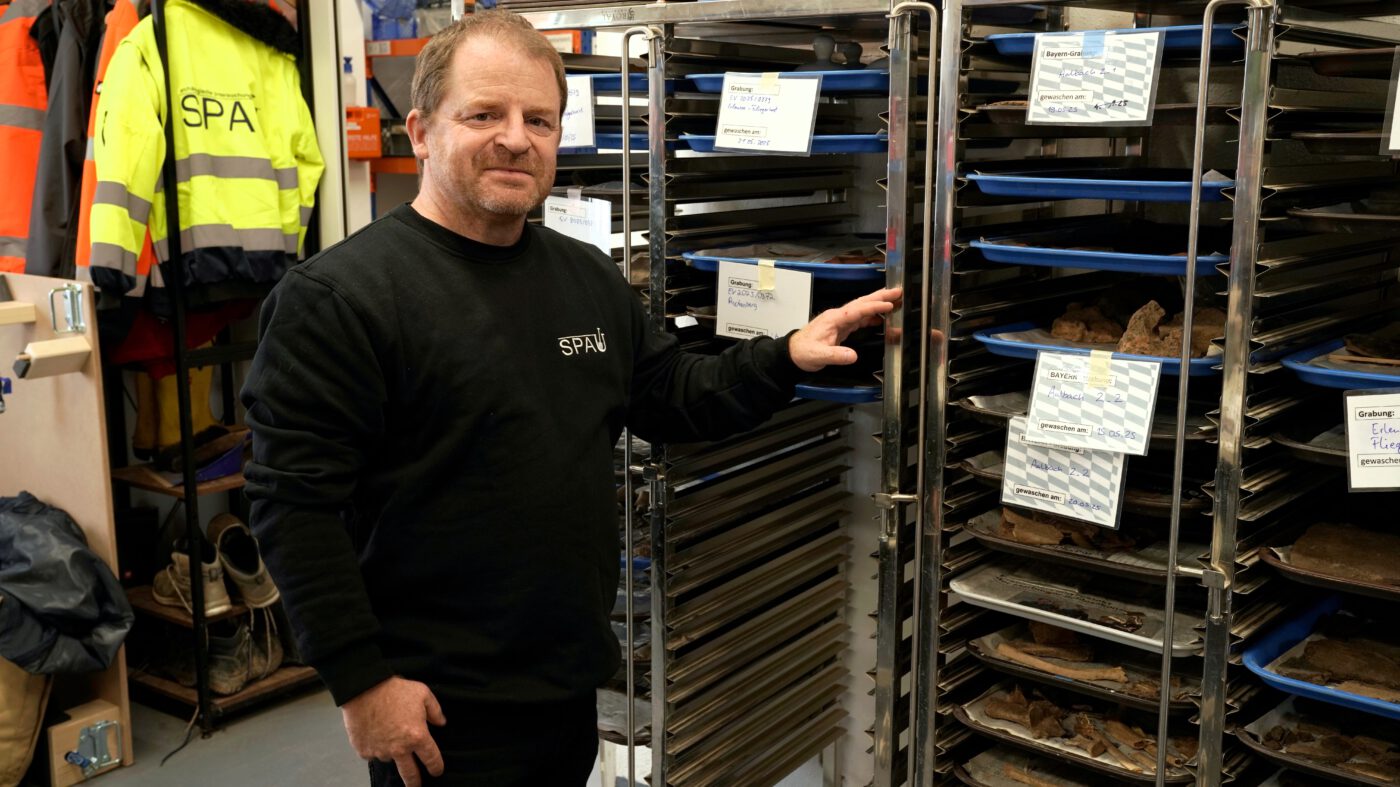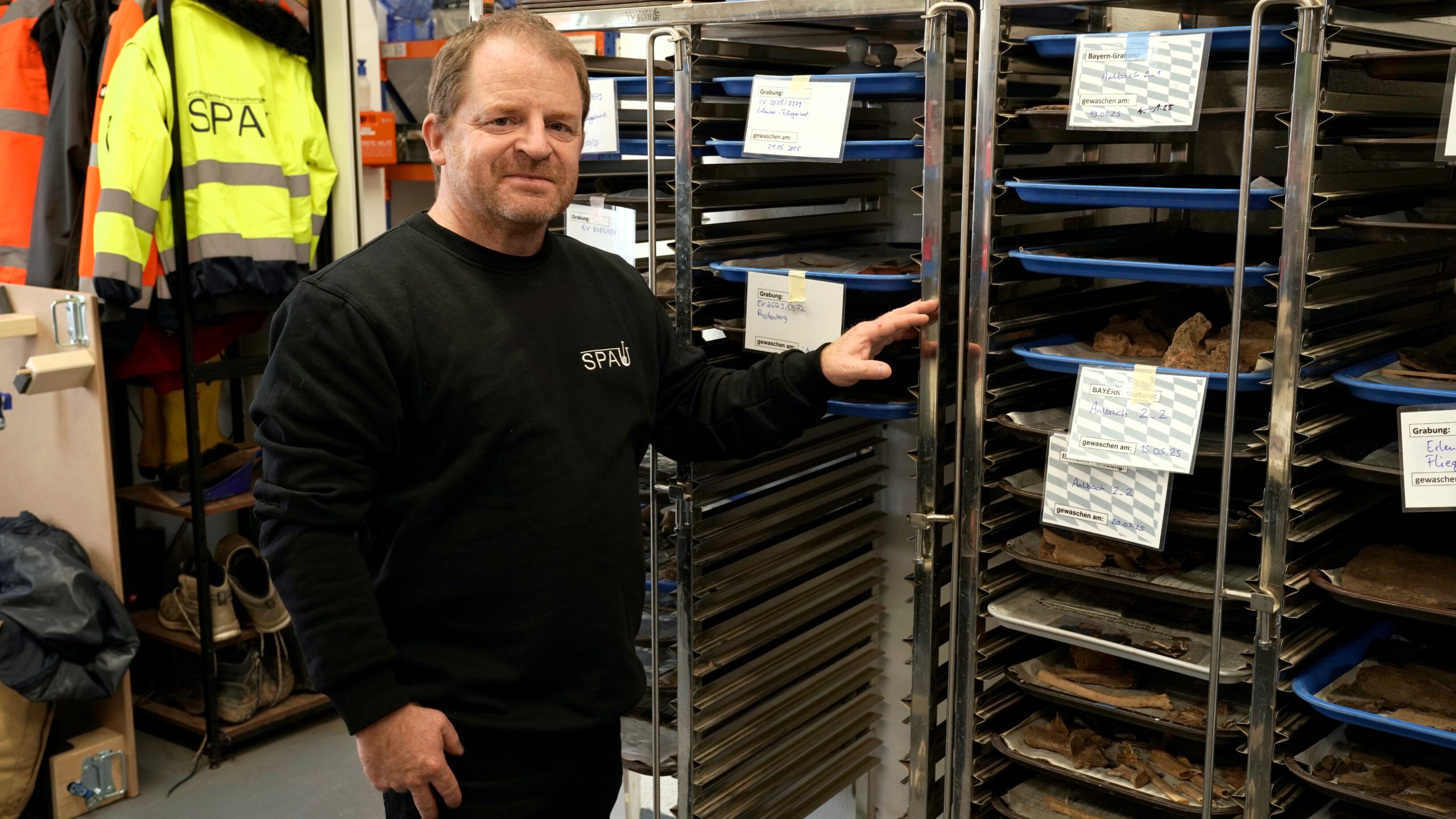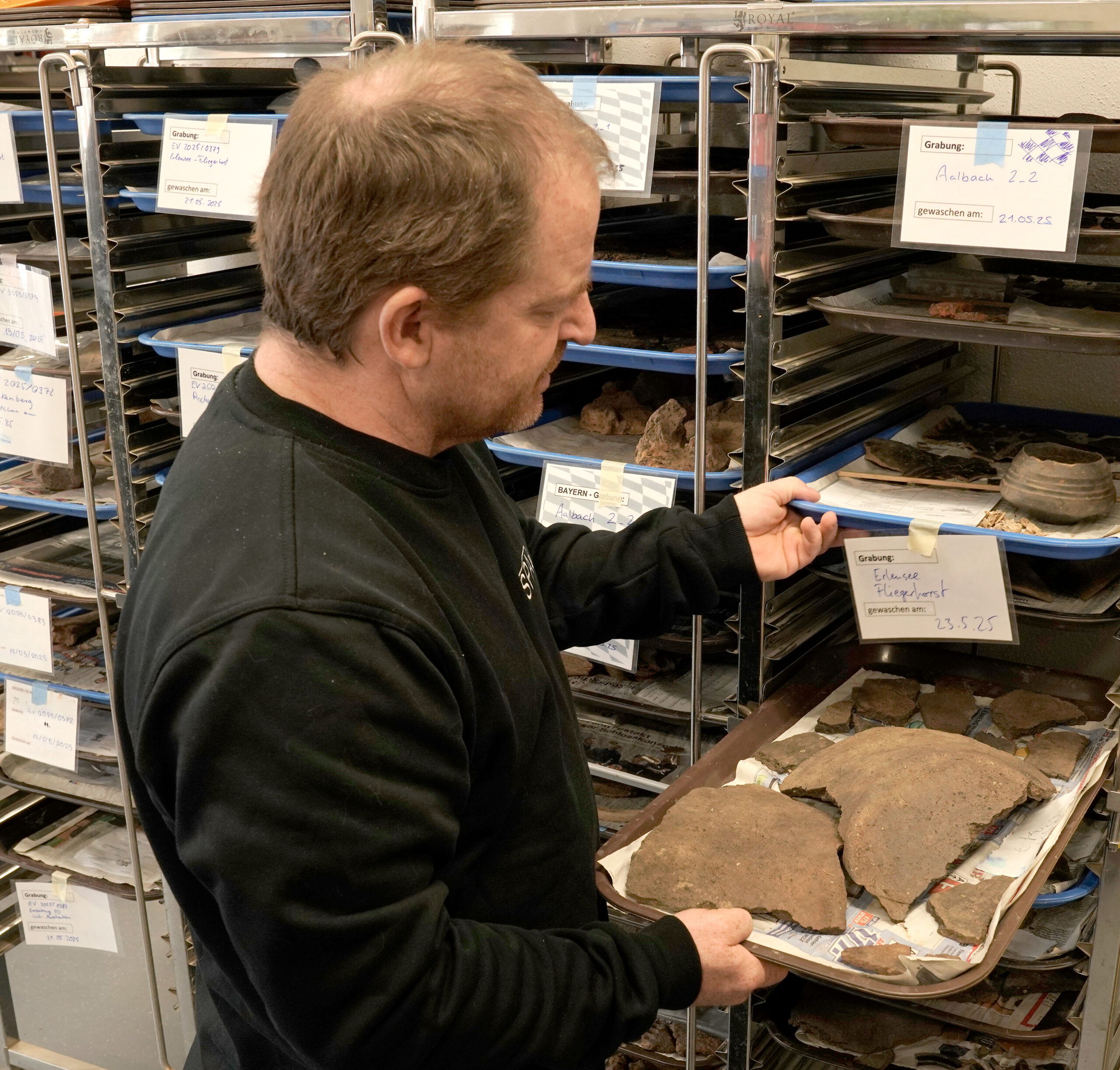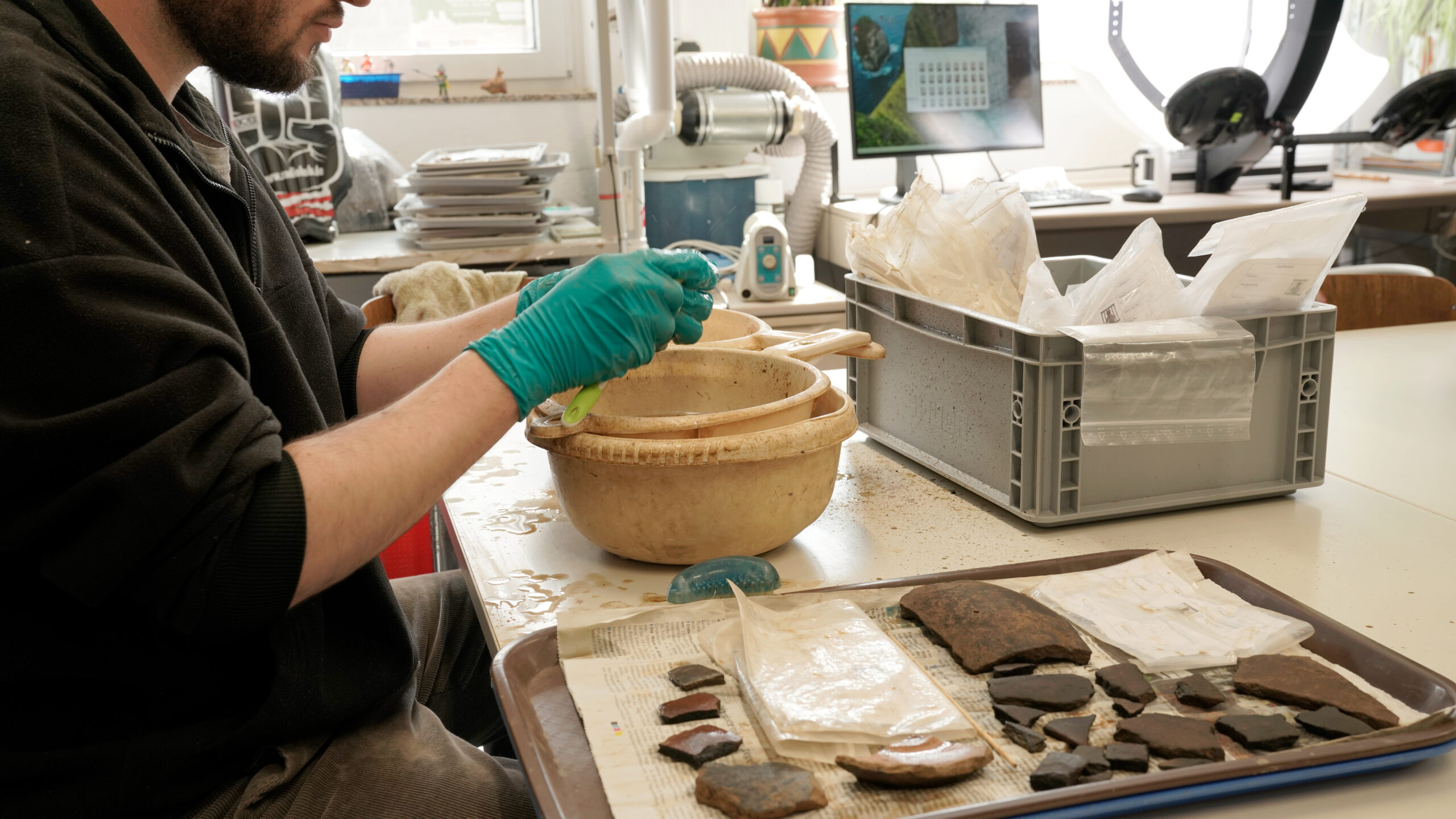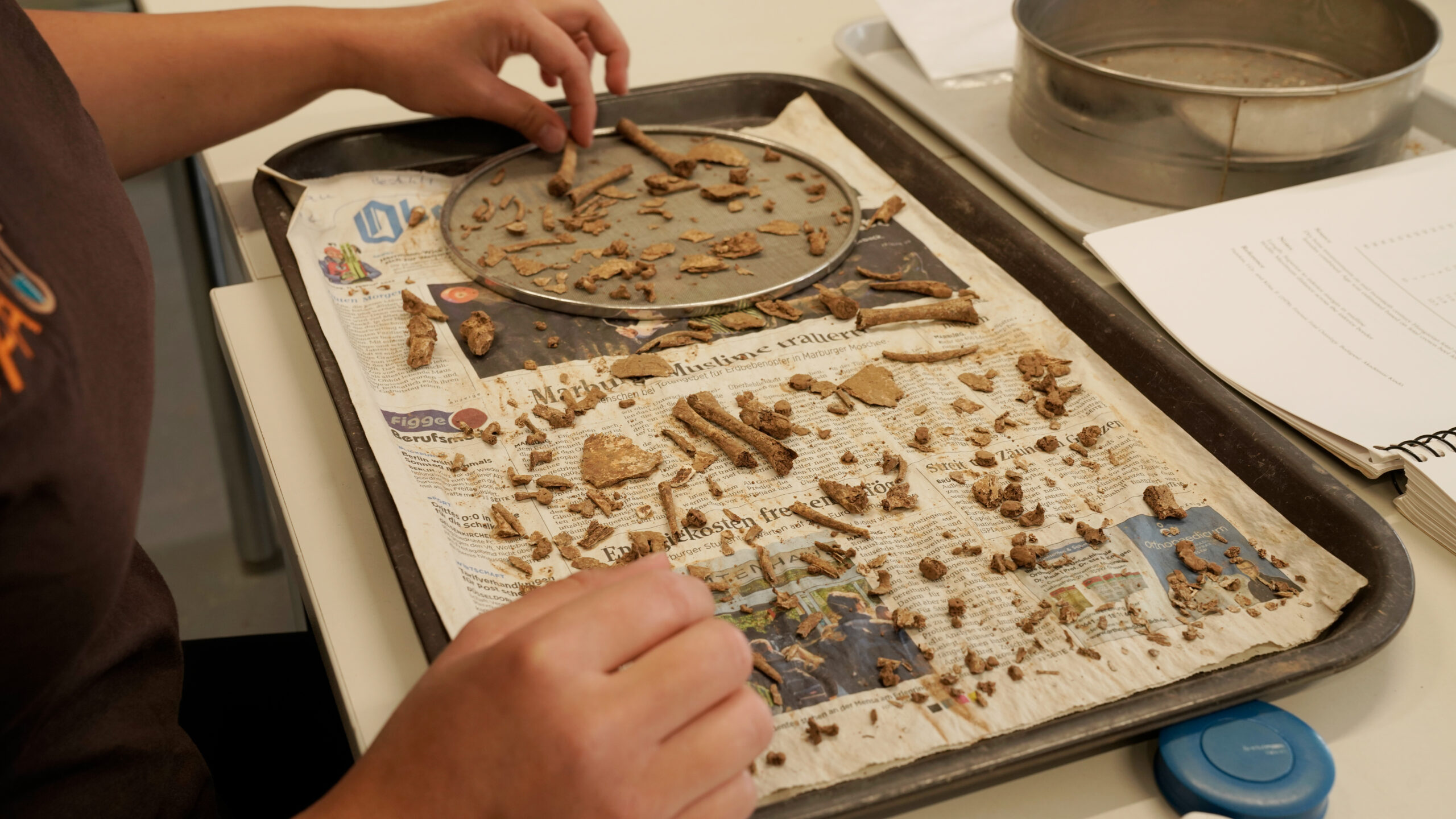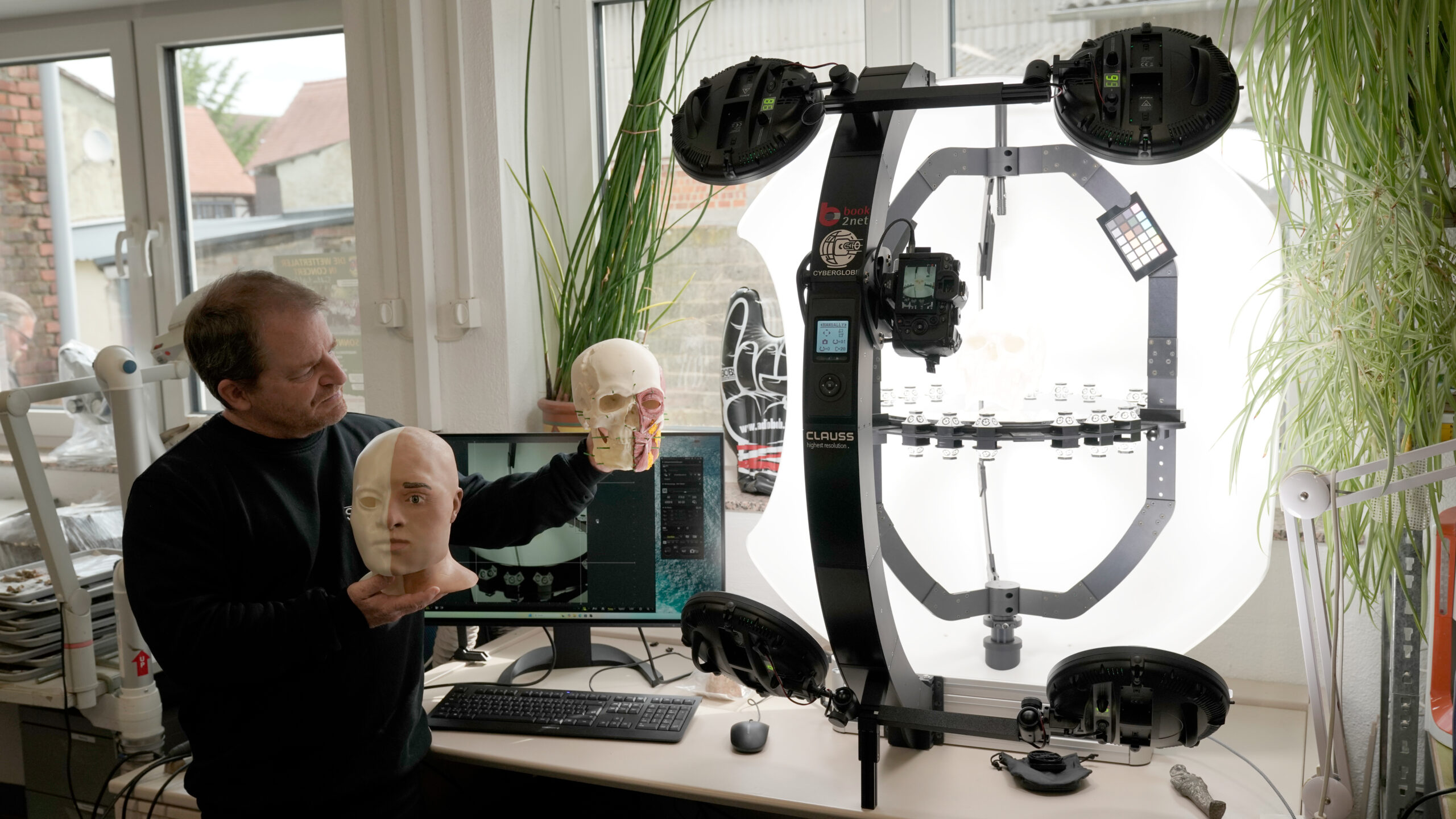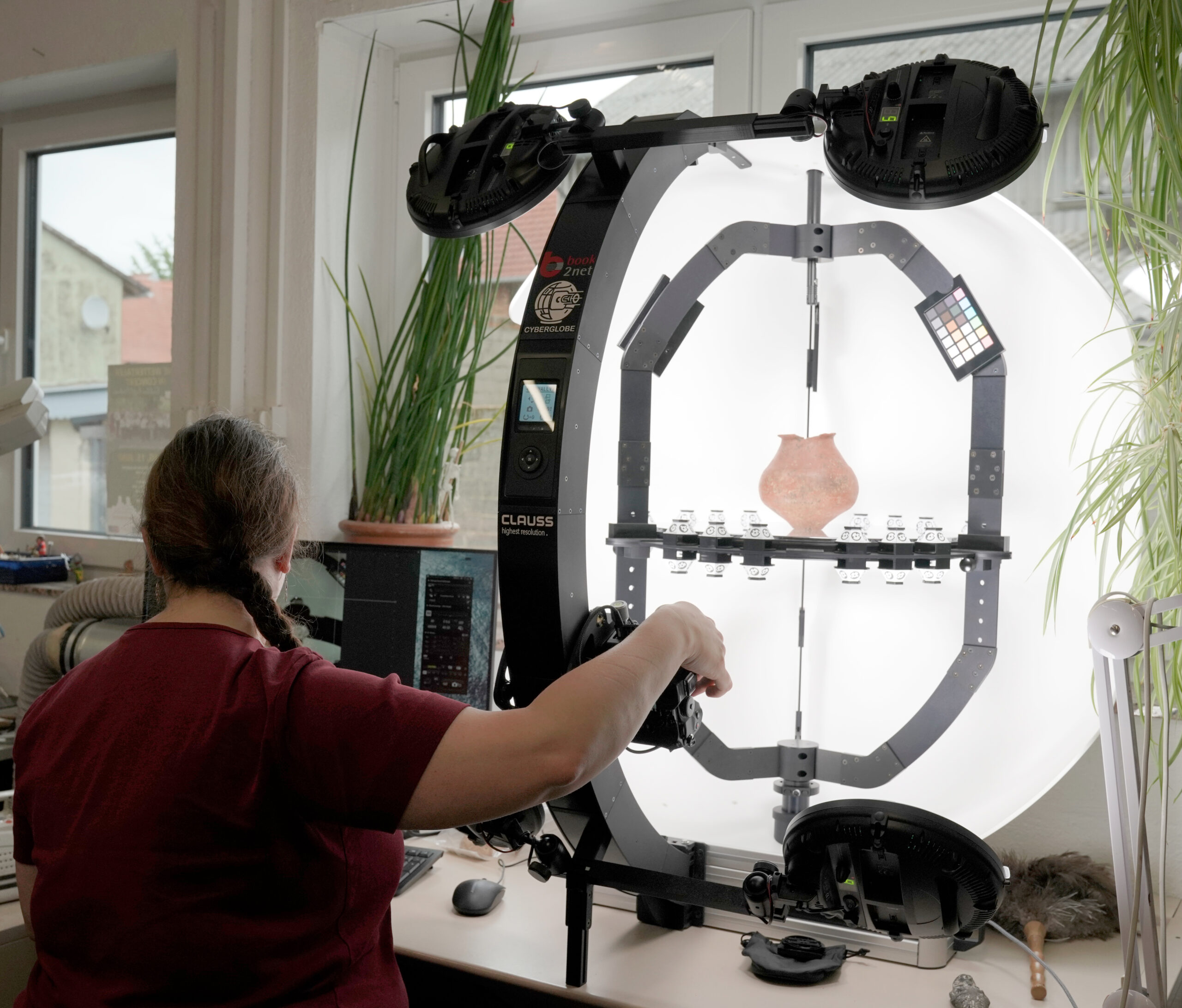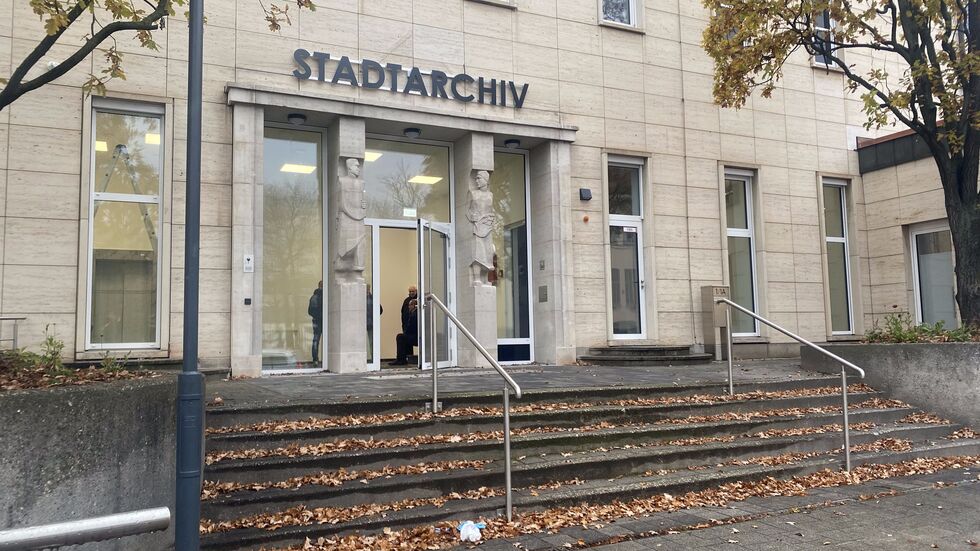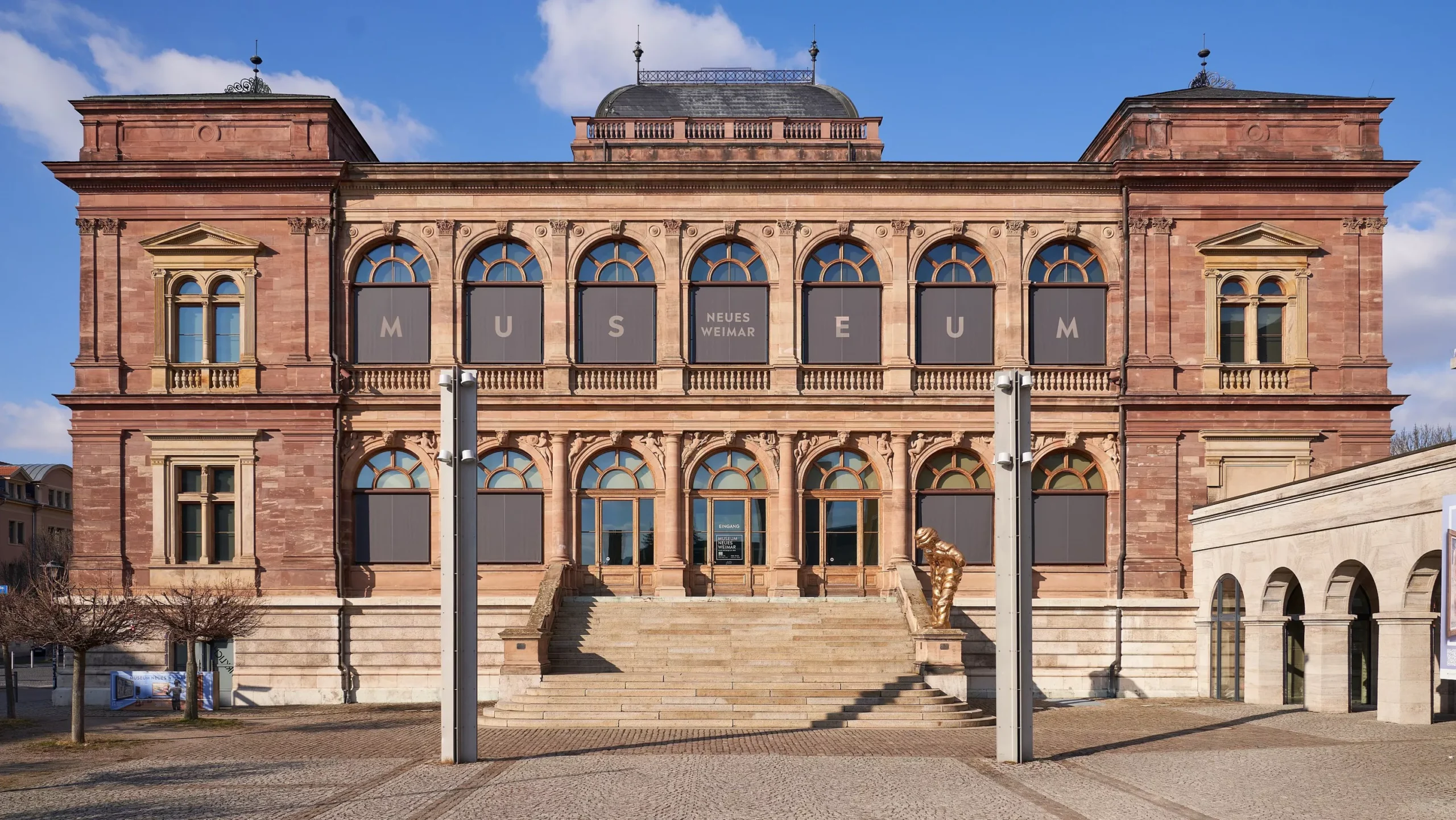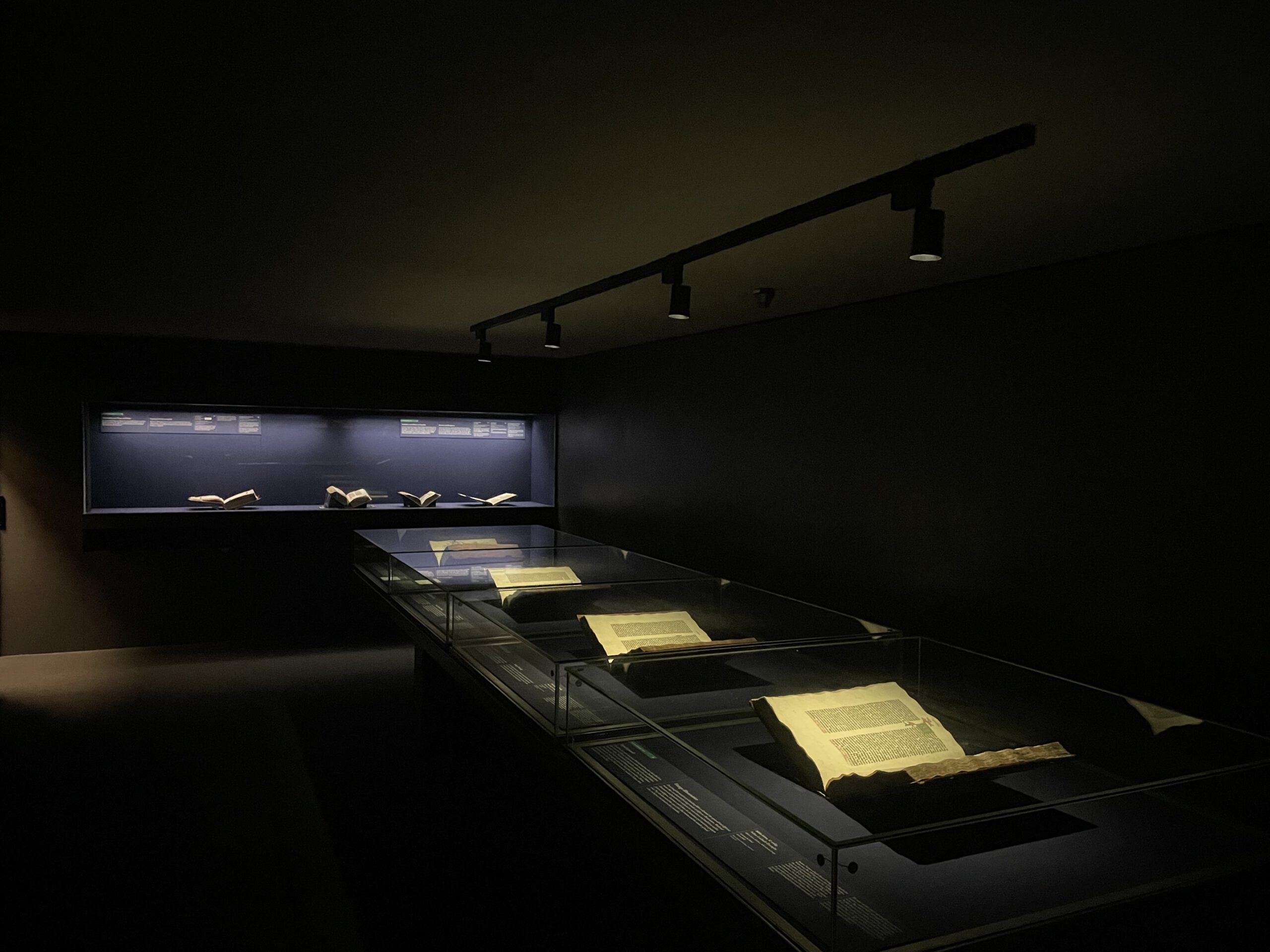SPAU GmbH , based in Münzenberg, has been working in the field of archaeology since 2015. Numerous excavations and archaeological reports are among the references of the company, which currently employs 60 people. In this interview, founder and Managing Director Sascha Piffko talks about the wide range of tasks carried out by his multidisciplinary team, the acquisition of the CYBERGLOBE Culture 3D scanning system and the enormous potential that the digitization of archaeological finds has to offer locally, regionally and globally.
Mr. Piffko, can you please briefly explain what kind of excavations you and your team carry out and what other work you do?
My company, SPAU GmbH, not only carries out excavations, we also provide our customers with comprehensive support. It starts with the fact that we support companies planning a construction project right from the planning stage. We provide them with a risk management system so that they can recognize how high the costs are and how high the risk is for the overall project. We also write very comprehensive expert reports, for example for the major power lines. And we carry out geophysical surveys, i.e. measurements that allow us to determine whether or not archaeological features are present without the need for excavators or spades.
You said risk. From the developer’s point of view, does that mean that a lot might be found and that everything will drag on?
Exactly. It can happen that the excavator removes the topsoil and you are completely surprised to find a Roman fort or a Celtic burial site. Then you have a cost explosion. The cost of the excavation is the least of the problems. The delay in construction costs many times more than the costs for the archaeologists. We offer the customer the option of analyzing this risk in advance and determining the best way to make construction possible – without risk and without interruption.
How do you assess the risk?
We start by looking in the archives to see if anyone has found anything there in the last 200 years. We have the opportunity to view aerial photographs. Many sites have been discovered by flying over them; Google Earth has made this much easier. There is the so-called LiDAR scanning method, which allows us to locate many monuments that were previously unknown by flying over and scanning the earth’s surface. Especially in forests and densely overgrown areas that are difficult to access. And geophysics is also involved: We walk across the field or through the forest with the measuring device and measure the magnetic field and disturbances in it.
The next step is the excavation itself. How does it work?
The archaeological investigation, the excavation, is a documented destruction of the monument. We take out the topsoil, the area where nothing can lie, and then the archaeological layers come underneath. They are not as deep as people often think. In an apple orchard we have to go down five centimetres, in a ploughed field 30 centimetres. Then we recognize the archaeological find, which could be walls or graves. We excavate and document them. We have to photograph, measure and, in some cases, draw everything. The finds are recovered – shards, bones, metal objects, glass, whatever. They are brought to our workshop, inventoried, cleaned, packaged and, depending on the material group, restored. Then it goes to the federal state monument authorities, as in Germany, the federal states are usually the owners of the finds.
You have an interdisciplinary team. How important is this diversity?
We need technically skilled people in advance who are familiar with geophysics. We also need data managers, but they are usually mainly archaeologists. In excavation, we mainly need archaeologists, but there are always career changers who have chosen this career path out of interest and enjoyment of archaeology, without a university background. And in the restoration department, we have conservators who handle the finds, anthropologists who deal with the human remains, i.e. whether the bones belong to a man or a woman, a child or an adult, what the cause of death was and what clinical pictures can be identified. We have an archaeozoologist who determines which animal bones are involved, which also provides information about the diet and hunting behavior of our ancestors. We also have an achaeobotanist on the team who is familiar with plant remains. We have specialists for all these things because I take a holistic view of archaeology. I want every find, every material that comes into my office to receive the best possible treatment.
What role does digitalization play in your work?
For 30 years, people in archaeology have been talking about the need to digitize more, and for 30 years we as archaeologists have been lagging behind. For example, there is still no standardized database in Germany for the finds or the scientific data that we discover and that we actually want to make available to the public. Finds are often still drawn by hand, which makes it impossible for us to manage everything with the masses we have in front of us. We are increasingly realizing that digitization is essential. We need it for excavations, where we have to store data much faster, i.e. digitally rather than by hand. Instead of drawings, more is being done photographically and with scans. We have to document the finds that end up in our restoration workshop very quickly; we want to take as much information as possible with us and make it accessible. That’s why photography and scanning are becoming increasingly important.
Keyword scanning: You have opted for a CYBERGLOBE Culture. What does it mean for you to be able to capture the objects effortlessly and completely in three dimensions – compared to working with photographs?
If we find the skull of a person who lived 5000 years ago, we can make a facial reconstruction of it if the client so wishes. There is a huge fascination in being able to look into the face of someone who lived at some point. That’s why we’re doing it more and more often. To do this, we have to measure the skull extremely precisely and need three-dimensional images. In the past, we always took photos, but it took us several days to two weeks to compile and process the photo data. The CYBERGLOBE Culture is a significant improvement in terms of the accuracy of the data; we get a very good resolution and very detailed images. Then there is the issue of time: we can carry out the recording very quickly, have huge cost savings and enormous efficiency. We can see that we currently have to deal with huge quantities of finds and that there is interest in finally inventorying the many existing German collections. Now we have the opportunity to record the data very quickly and very accurately, without any loss of quality. We can make our cultural heritage available to people in its entirety.
In addition to the reconstructions, the scan also makes it possible to view and analyze the object in its digital form at any time, even if the original is not available.
The most important point is to make the find accessible. People all over the world may be interested in a find. For example, there may be a researcher in China who is writing a doctoral thesis on a particular topic and needs data from an object located in Germany. The traditional approach is to get on a plane and fly to Germany. For ecological reasons, we no longer want to do this today, because it is a financial challenge, the time required is enormous and many objects are simply not known to exist. If we manage to digitize all these objects that are somewhere in museums, collections, archives and depots and make them accessible in databases, it will be possible to work with the object all over the world. Objects that were previously unknown can be incorporated into research. We spend many billions to obtain research data and the data is currently lying around unused. You could make this existing data accessible with much less effort and not have to constantly acquire new data from somewhere. This is a huge advantage that can catapult research forward and also make international research possible.
The second aspect is, of course, the possibility of reproducing things. When we as an archaeology company carry out an excavation for a local authority, there is always interest in the objects. The population, politicians and tradespeople have an interest in getting their hands on certain objects. However, this cannot usually be done because the originals are too fragile. However, we can present them three-dimensionally on screens by scanning them or reproduce the object using a 3D scanner and a 3D printer. For example, we have scanned and reproduced cups from the Neolithic period that we have found. The mayors can then give such a cup as a gift to visiting delegations. An archaeological object found in the municipality is a unique gift.
Does this provide an additional source of income for you?
Yes, it is my great wish that we can offer a service for museums, collections, depots and offices that want to have objects digitized at low cost and thus create the opportunity to break completely new ground.
It is also important to me to safeguard the finds: we see that cultural assets are also threatened by wars and environmental disasters and are suddenly no longer accessible, but once you have digitized the finds, they are secured. Even if the find has disappeared due to an environmental disaster, war or theft, it is still accessible thanks to digitization. And we can reproduce it. The loss is only the pure object, but not the knowledge, which remains with us.
What role do 3D digitization and 3D printing play in making archaeology much more popular?
At the moment, we make far too little use of the opportunities offered by archaeology. Excavation in the course of a construction project is seen as a nuisance. People only see the monetary aspect. But we have the opportunity, if we are already investing so much money in a project, to make maximum use of the results. If you present the data, the objects and the fascination to people in an enhanced way, if you offer them a product that was created during this excavation for a small surcharge, then you are giving them something positive, beautiful and instructive. Perhaps a facial reconstruction through which you can look an ancestor in the face. History and archaeology become tangible. I can pick up an object, turn it around, ask questions about it and it gives me answers. Suddenly the money I’ve spent isn’t just gone, but I get something out of it. I see this as a great added value in ensuring that archaeology is better accepted in society.
